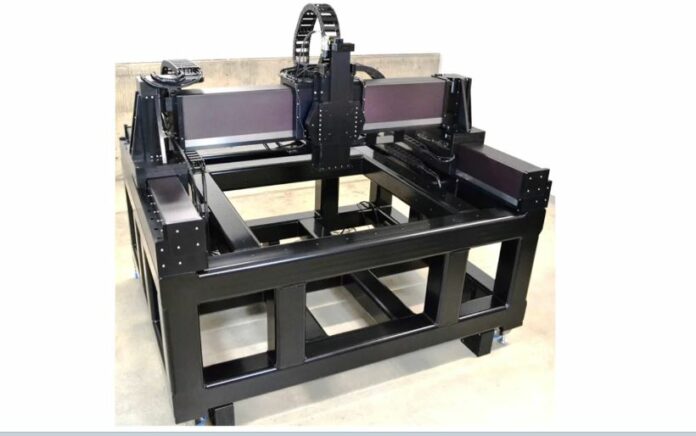
The last time we spoke of motion control systems manufacturer ALIO Industries, the company was highlighting how 3D printing technology can enhance motion control systems used in digital pathology and now they are elaborating how precise Cartesian gantries of robots can help the Additive Manufacturing (AM) industry.
Cartesian gantries form an essential part of robotics and motion control systems as they allow the robots to function in a three-dimensional way following the Cartesian coordinates along the three axes X, Y, Z. Linear motors, precision bearings and geometric error compensation techniques make the motion control systems move in straight lines in the desired direction along each axis in a limited workspace like those used in the 3D printing process.
Now, as AM evolves to meet the demands of high precision, accuracy, repeatability and speed in the production of 3D printed parts, there’s a push for miniaturization to tackle workspace constraints. Cartesian gantries of motion control systems with a scalable and adaptable modular design. This allows for increased product complexity and higher quality standards in the 3D-printed parts.
The Cartesian gantries of the motion control systems can help both AM users and 3D printer manufacturers achieve higher tolerances and automate the assembly lines by enabling faster adjustments and responses. This in turn increases productivity and reduces waste in the additive manufacturing industry as defects in 3D printed parts are reduced.
The company uses high-performance motors which are capable of precision movement with high payloads and mechanisms. The motion control systems have the necessary rigidity that reduces vibrations and avoids crashes while working efficiently amidst floor constraints.
Speaking about the company’s Cartesian gantries, the President of ALIO Industries Bill Hennessey said: “In pick and place applications, Cartesian gantries offer a large workspace which enhances operational flexibility and efficiency. Such an expansive workspace allows the system to access and manipulate a broader array of components simultaneously, streamlining batch processes and enabling faster production cycles. This spatial flexibility also means that the system can be easily reconfigured or adapted to handle diverse product sizes or types without substantial modifications, catering to the ever-changing demands of modern production lines”.
Remember, you can post job opportunities in the AM Industry on 3D ADEPT Media free of charge or look for a job via our job board. Make sure to follow us on our social networks and subscribe to our weekly newsletter : Facebook, Twitter, LinkedIn & Instagram ! If you want to be featured in the next issue of our digital magazine or if you hear a story that needs to be heard, make sure to send it to contact@3dadept.com





